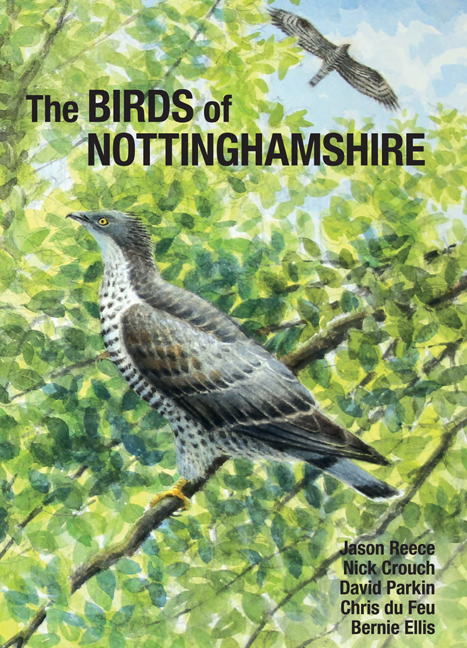Book contents
- Frontmatter
- Contents
- Foreword
- Acknowledgements
- Species sponsorship
- Introduction
- A history of bird recording in Nottinghamshire
- A description of Nottinghamshire and its bird habitats
- Methods
- Species accounts
- Additional Records 2014–2018
- Appendix: Additional and contentious species
- References
- Index
- Miscellaneous Endmatter
Species accounts
- Frontmatter
- Contents
- Foreword
- Acknowledgements
- Species sponsorship
- Introduction
- A history of bird recording in Nottinghamshire
- A description of Nottinghamshire and its bird habitats
- Methods
- Species accounts
- Additional Records 2014–2018
- Appendix: Additional and contentious species
- References
- Index
- Miscellaneous Endmatter
Summary
Brent Geese are familiar coastal wintering birds in Britain. Two races regularly overwinter in England, the Dark-bellied B. b. bernicla and the Pale-bellied B. b. hrota. Dark-bellied Brent Geese breed along the Arctic coastline of northern Siberia and are the commoner race in England, whilst Pale-bellied Brents breed in Canada and Svalbard and only regularly winter in England at Lindisfarne on the Northumberland coast. Both races have been recorded in Nottinghamshire.
Historically, Brent Goose was a very rare straggler to Nottinghamshire, with just three records in the county prior to the 1950s. The first involved a bird that was killed on the River Trent at Newark in the winter of 1850. There were two further Victorian records: a single bird on the Rivers Erewash and Trent on 11 October 1888, and a small flock of birds flying over Cave Pond on an unspecified date in 1889.
There was then a long gap until a singleton was found at Burton Meadows on 26 February 1956. Brent Goose remained an extremely rare visitor to the county for the next 20 years and there were just two further records prior to 1978, involving a party of seven or eight birds near Misson in the north of the county on 12 May 1957, and a single bird at Attenborough NR on 7 January 1973.
The status of this species has altered significantly since 1978 as the world population and the number wintering in England has risen dramatically. However, Brent Goose remains less than annual in the county, with just 190 birds recorded by 2013.
No more than 14 birds have been found in any one year, with the exception of 1979, when there were two relatively large counts of 12 birds at Bulcote on 18 March and of 33 birds through Oxton Bogs on 11 November (the largest ever count in the Midlands), and 1996 when nine birds were found at King's Mill Reservoir on 4 January, with the same number present at Girton on 23–25 March. The only other Nottinghamshire count to have exceeded seven birds was a flock of 12 at Colwick CP on 21 October 1987.
- Type
- Chapter
- Information
- The Birds of Nottinghamshire , pp. 55 - 568Publisher: Liverpool University PressPrint publication year: 2019

